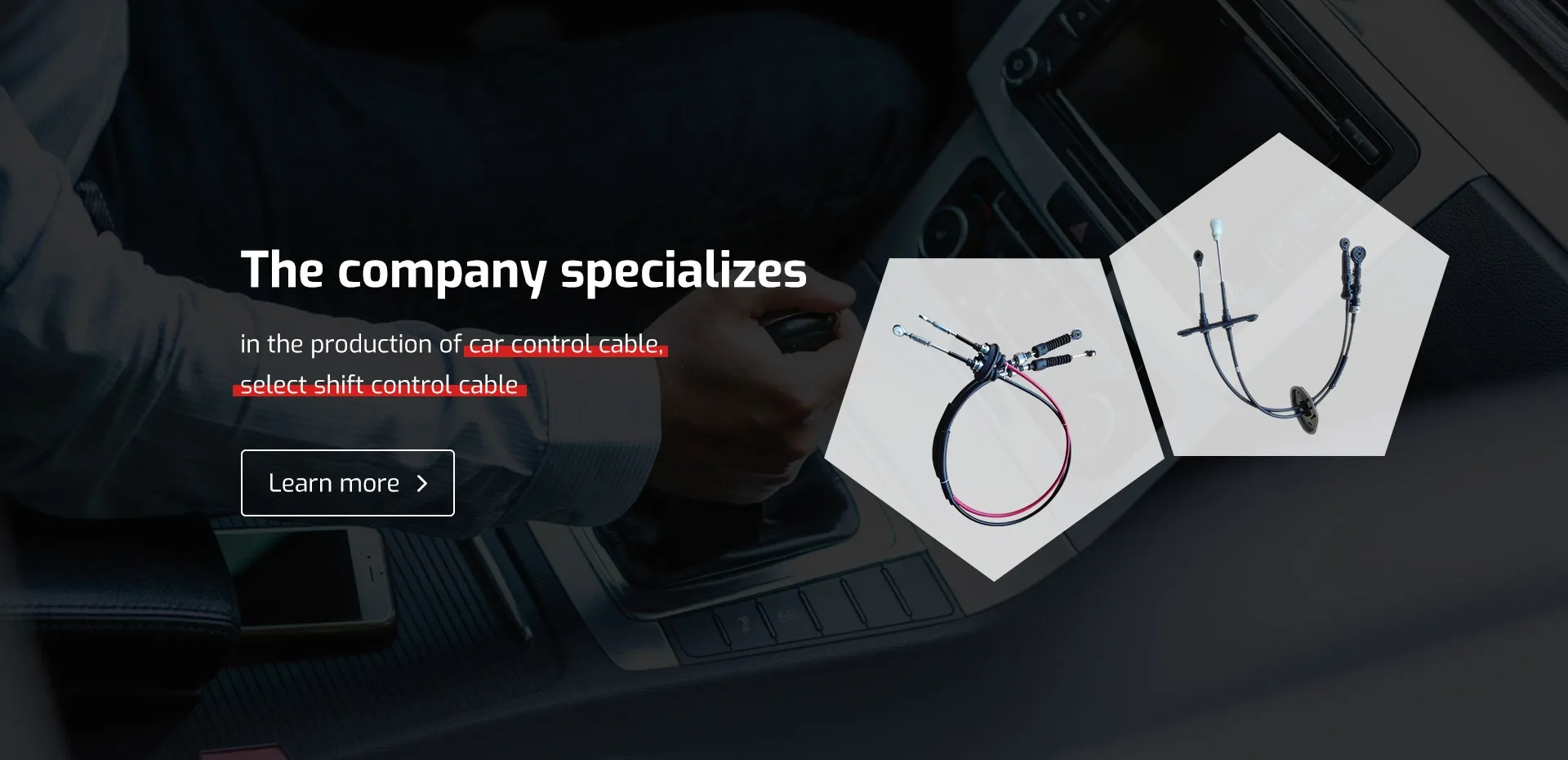accelerator cable
Understanding Accelerator Cables Essential Components for Vehicle Performance
The accelerator cable is a crucial component in the mechanical systems of many vehicles, acting as the connection between the accelerator pedal and the throttle valve of the engine. This simple but vital part plays a significant role in controlling engine power and, consequently, the overall driving performance of a vehicle. Understanding the function, types, and maintenance of accelerator cables can help vehicle owners appreciate their importance and ensure smooth driving experiences.
Function of Accelerator Cables
At its core, the accelerator cable is designed to transmit the driver's input from the accelerator pedal to the throttle body, which regulates the airflow entering the engine. When the driver presses the accelerator pedal, the cable pulls on the throttle valve, allowing more air to enter the engine. This action increases the power output, allowing the vehicle to accelerate. Conversely, when the pedal is released, the cable retracts, closing the throttle valve and reducing engine power.
The accelerator cable operates on the principle of tension and flexibility. Made typically from steel with a protective outer casing, the cable is designed to be both durable and flexible enough to handle the continuous movement caused by the driver’s input. In older vehicles, these cables were purely mechanical, but modern vehicles increasingly use electronic throttle control systems, removing the need for a physical accelerator cable in favor of sensors and electronic signals.
Types of Accelerator Cables
There are primarily two types of accelerator cables mechanical and electronic. Mechanical accelerator cables are most common in older vehicles. They consist of a cable that physically connects the accelerator pedal to the throttle body, thus allowing direct control over the engine’s power output. The design is straightforward; however, it can suffer from wear over time, which may lead to issues such as sticking or failure.
accelerator cable

On the other hand, electronic throttle control (ETC) systems are becoming standard in new vehicles. These systems eliminate the mechanical cable and instead use sensors to detect the position of the accelerator pedal. The data is then transmitted to the engine control unit (ECU), which modulates the throttle position electronically. This system offers several advantages, including improved fuel efficiency and enhanced performance, and it can also integrate with other vehicle technologies such as traction control and cruise control systems.
Maintenance and Common Issues
Like any mechanical component, accelerator cables require regular inspection and maintenance to ensure proper functionality. Common signs of accelerator cable issues include inconsistent acceleration, sticking pedals, or a delayed throttle response. If these symptoms arise, it is essential to diagnose the problem promptly.
For mechanical accelerator cables, routine maintenance might involve checking for fraying or damage to the cable itself and ensuring that the mounting points are secure. Lubrication of the cable can also prevent sticking and prolong its lifespan. In contrast, with electronic systems, issues often relate to the sensors or the ECU rather than the physical cable, requiring specialized diagnostic tools to troubleshoot effectively.
Conclusion
In conclusion, while often overlooked, the accelerator cable is an integral part of a vehicle’s performance. Whether mechanical or electronic, it serves the crucial purpose of translating driver input into power output, directly impacting how a vehicle accelerates and performs. Understanding its function, types, and maintenance needs can empower vehicle owners, ensuring they maintain an efficient and responsive driving experience. As automotive technology continues to evolve, understanding the role of components like the accelerator cable remains essential for both enthusiasts and everyday drivers alike. Regular upkeep and timely attention to any issues can prolong the cable's lifespan and ensure the vehicle operates smoothly, providing a safe and enjoyable driving experience.
-
Workings of Clutch Pipe and Hose SystemsNewsJun.04,2025
-
The Inner Workings of Hand Brake Cable SystemsNewsJun.04,2025
-
The Secrets of Throttle and Accelerator CablesNewsJun.04,2025
-
The Hidden Lifeline of Your Transmission Gear Shift CablesNewsJun.04,2025
-
Demystifying Gear Cables and Shift LinkagesNewsJun.04,2025
-
Decoding Clutch Line Systems A Comprehensive GuideNewsJun.04,2025
